|
Research Project
Having recently been introduced to the work of Alexander Wilson and being charmed last year by the impressive re-packaging of E. Phillips Oppenheim titles by The British Library I have decided to set myself a little research project which might possibly result in a minor academic paper in a learned journal somewhere.
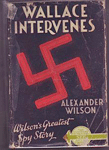 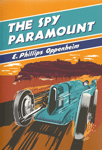
I will be devoting myself to a study of thrillers written in the 1930s, to see how they dealt with the rise of fascism and how they portrayed Nazi Germany in the pre-war years. At the top of myreading list are two novels which were recommended to me by Dorothy L. Sayers. Not personally, of course, but from her reviewing them on first publication in her role as crime fiction critic for The Sunday Times between 1934 and 1936.
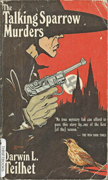
The Talking Sparrow Murders by Darwin L. Teilhet was first published in 1934 in America and is set in Heidelberg shortly after the Nazis took power in 1933, clearly written at that time by someone who knew what was going on in Germany and realised that things were likely to get worse. It certainly pulls no punches when describing the rife anti-Semitism and corruption of the Nazi regime, has a wonderful night club scene (which could have been straight out of Cabaret) and some lovely hardboiled quips such as: getting a German telephone operator to hurry is like getting drunk on Löwenbrau; it can be done but it takes time.
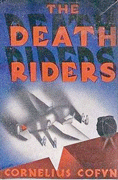
More difficult to get hold of was the British thriller The Death-Riders by the obviously pseudonymous ‘Cornelius Cofyn’, first published in 1935 and I think more or less out of print since 1936. Aside from its interesting historical context, its authorship should also be of interest to the serious student of crime fiction as ‘Cornelius Cofyn’ was actually a writing partnership of John De Vere Loder (1895-1970), who became the second Baron Wakehurst, and Hilary St George Saunders (1898-1951) who, in another writing partnership with John Palmer, formed the rather well-known 1930s detective novelist Francis Beeding.
My reading list will also include Geoffrey Household’s Rogue Male from 1939 (though I never need an excuse to read that) and all the pre-war works of Eric Ambler, with The Dark Frontier (1936) and Epitaph for a Spy (1938) in particular being long overdue for a re-read.
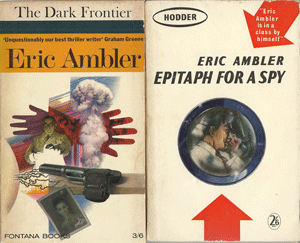
But to be honest I am really looking forward to my two ‘discoveries’ – the Teilhet and the Cofyn – both of which I have been meaning to get around to since my lecture on Dorothy L. Sayers as a crime critic which I gave to the Sayers Society in Cambridge in 1999.
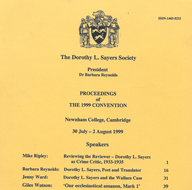
I have only discovered this month that my 1999 lecture was reproduced in 2005 on a website “chat room” called GA Detection whose keyboard warriors roundly trashed it for being “dull and sneering” in comments whilst using that old lawyers’ trick of getting my name wrong.
Whilst I would always apologise for being dull, I would say that anyone wanting to sneer at Dorothy L. Sayers in a lecture given with Dorothy’s god-daughter, biographer and academic collaborator sitting on the front row a few feet away would have to be much braver than I. Or indeed a “pompous ignoramus”, which is how I have been labelled by the boys in the back (chat) room.
Day of the Forsyth
I am not a great reader of the autobiographies of writers (nor actors, politicians and certainly not “celebrities”), although Here Lies Eric Ambler, J.I.M Stewart’s Myself and Michael Innes and Geoffrey Household’s Against the Wind certainly have their moments.
However, I am looking forward to Transworld’s publication in September of the autobiography of Frederick Forsyth and I hope it covers his days as a cub reporter on the well-known East Anglian newspaper where I also cut my journalistic milk teeth.
Still More Awards
And the awards for crime writing keep coming.
At this month’s Crimefest convention in Bristol (14th-17th May) at least four awards – probably more – will be dished out: the eDunnit Award (for “best crime fiction ebook first published in both hard copy and electronic format” – surely, that’s “best book” isn’t it?); the H.R.F.Keating Award for critical or biographical work; the Audible Sounds of Crime Award for audio books; and the Goldsboro Last Laugh Award, which I think is for comedy crime writing judging by the hilarity generated by the announcement of last year’s winner. (Comedy crime seems to be booming as there are no less than 31 novels on the Last Laugh longlist, including three by Jean Goodhind and two by Simon Brett).
Shortlists have also been announced for the International Thriller Writers’ Thriller Awards to be made in July at the tenth Thriller Fest in six categories: Hardback novel; First novel; Paperback Original; Short Story, Young Adult and eBook Original.
Dandified
I must declare an interest.
As the series editor of Top Notch Thrillers, an imprint dedicated to making sure that great British thrillers are not forgotten by republishing them as proper books (and not just by eBooking en masse), I had always had in my editorial sights Derek Marlowe’s 1966 spy thriller A Dandy in Aspic.
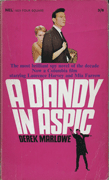
Marlowe’s debut novel, written whilst he shared a flat on London’s Vauxhall Bridge Road with playwright Tom Stoppard and author Piers Paul Read, was an instant hit and filmed almost immediately after publication. The film, starring Laurence Harvey and Mia Farrow, is not, I think, well-known other than for the movie buff’s trivial pursuit fact that it was the last film of legendary western director Anthony Mann. (In fact Mann died during filming and Laurence Harvey took over as director to complete the movie.)
Even though I remembered little of the film, I did remember the book which contained a fantastic plot point in that at the height of spy-fi popularity (Le Carré, Deighton, Ambler, John Gardner, Francis Clifford and many others were all successfully ploughing the field) the novel is written from the point-of-view of a Russian mole inside British Intelligence who is ordered to hunt down himself.
I was surprised to find that the novel had been out of print for over 35 years and, in 2012, set about trying to find the literary executor for Derek Marlowe, who died in 1996. With the help of writer Piers Paul Read, I made contact with Marlowe’s son, who put me in touch with the Californian lawyer who handled the literary estate. After several months of being ignored and much persistence, I eventually received a very curt reply from California demanding either a legally guaranteed first year sales figure or a substantial non-returnable advance, preferably both. The whole experience was rather like dealing with….well… a lawyer.
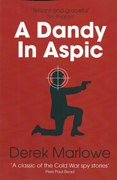
And so A Dandy in Aspic slipped from my wish list and from memory, until this month, that is, when I learned that the book has finally returned to print courtesy of Silvertail Books, an imprint of which I was previously unaware. It is with a sigh of “the one that got away” (and the realisation that it probably won’t be the last) that I wish the new edition well and recommend it to any student of ‘Golden Age’ Cold War spy-fi.
Executive Action
For those who prefer their spy/subterfuge fiction bang up to date – almost as if Wiki-leaked to the media – then I can hardly do better than recommend the latest Marc Portman (a.k.a. The Watchman) thriller Close Quarters by Adrian Magson, now out from Severn House.
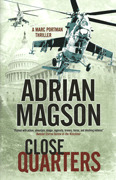
Magson’s new high-octane novel opens with a car-jacking in Tehran worthy of a scene from the last series of Homeland and fully supports the credentials of ‘close protection specialist’ Marc Portman as just the man to call if you need to be ‘extracted’ (possibly with extreme prejudice) from a difficult situation. The Watchman, as he is known, is almost immediately hired by the CIA to extract a US State Department official detained in strife-torn Ukraine, where he has to pit his wits and martial skills against gangsters, heavily-armed pro-Russian separatists and Ukrainian special forces. Needless to say, not everyone back at the CIA can be trusted.
But then the Watchman tends to rely on himself, so it’s a good thing that in his DNA are honourable traces of action heroes past, heroes suchas Quiller, Jason Bourne and even, as he himself admits, MacGyver (whose first name, I have subsequently discovered, was Angus).
Promotional Perks
In twenty-five years (yes – 25!) of reviewing crime fiction, I thought I had seen every possible type of promotional material there was going: fake editions of historic newspapers (some very cleverly done indeed), t-shirts, packs of themed playing cards, a jigsaw puzzle, chocolates, a single tea-bag and, once an electronic thing the size of a postage stamp which I was later told was something called a ‘Sim card’ though knowing that left me no wiser as to how to use it.
Yet nothing quite prepared me for the promotional items which accompanied a forthcoming title from that Jolly Magnificent publisher John Murray, namely: a pair of surgical gloves, a pack of antibacterial wipes and what appears to look suspiciously like a disposable (thank goodness) anal thermometer.
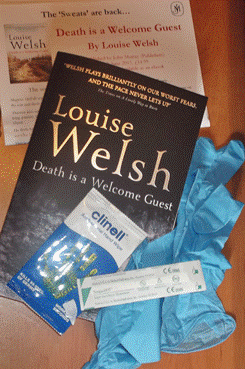
It is, of course, a clever way of promoting Death is a Welcome Guest, the second volume in the ‘Plague Times’ trilogy by Louise Welsh, to be published next month. As the book, like its predecessor A Lovely Way To Burn, is set in a dystopian England ravaged by a modern plague, all medical precautions have to be taken.
Stockholm Syndrome
As regular readers know I am always poised, like a greyhound in the slips, for news of the latest crime fiction from Scandinavia, yet the latest offering is not a conventional crime novel and is very good indeed.
Published by Maclehose Press this month, Fall of Man in Wilmslow is a novel about the death and life (in that order) of mathematician, code-breaker and British war hero Alan Turing so memorably portrayed on screen last year by Benedict Cumberbatch in The Imitation Game (and by Derek Jacobi in 1996 in the BBC film Breaking the Code). Swedish journalist and author David Lagercrantz has done a marvellous research job not only on his famous subject but also on the nuts and bolts of life in Wilmslow in Cheshire in 1954.

Now known for the upmarket homes of uber-rich footballers from both the red and blue halves of Manchester, back in 1954 Wilmslow was the setting for the suicide of Alan Turing following his appalling treatment at the hands of the police and the ‘Establishment’ in what seems to have been a hysterical witch-hunt against homosexuals. (It was this same witch hunt which, in 1953, had ensnared that fine writer Rupert Croft-Cooke, best known for his splendid crime novels written as ‘Leo Bruce’.)
Fall of Man in Wilmslow begins with the police investigation into Turing’s death and a young detective’s determination to discover more about Turing’s career and war service – which of course was still highly classified in 1954 – is a sympathetic and intelligent piece of storytelling, flawlessly (it seems to me) translated.
David Lagercrantz has already had great success in Europe as the ghost writer of the autobiography of Swedish footballer I Am Zlatan Ibrahimovic but don’t worry if you’ve never come across the name before. You will certainly hear it or see it in bookshops this summer when the fourth part of the late Stieg Larsson’s ‘Milennium’ trilogy is released on an unsuspecting world as The Girl in the Spider’s Web for which, of course, I can hardly wait.

|
|
The Name’s Bond…
 I was taking tea with my old chum Reg Gadney, the novelist, scriptwriter, art historian and noted painter, the other week when I happened to mention that on a visit to the Cambridge Book Fair I had spotted a collection of Ian Fleming first editions with their famous covers painted by artist Dickie Chopping, whom Reg and I both knew. Interestingly, the book dealer displaying the Fleming hardbacks was also offering for sale an early edition of Birds of the West Indies by an ornithologist who rejoiced in the name….James Bond. I was taking tea with my old chum Reg Gadney, the novelist, scriptwriter, art historian and noted painter, the other week when I happened to mention that on a visit to the Cambridge Book Fair I had spotted a collection of Ian Fleming first editions with their famous covers painted by artist Dickie Chopping, whom Reg and I both knew. Interestingly, the book dealer displaying the Fleming hardbacks was also offering for sale an early edition of Birds of the West Indies by an ornithologist who rejoiced in the name….James Bond.
Now I knew the story of Ian Fleming appropriating the ornithologist’s name for his fictional hero, and I also knew that Reg Gadney had written the script for the 1989 TV movie Golden Eye which covered Fleming’s career in Naval Intelligence during WWII and his early career as an author in his Jamaican home.
What I had not remembered, until Reg enthusiastically reminded me, was that he himself had actually played the part of the ornithologist in the movie which in effect made him the eighth James Bond after Barry Nelson (in the US), Bob Holness (on radio in South Africa), Sean Connery (famously), David Niven (unusually), George Lazenby, Roger Moore and Timothy Dalton.
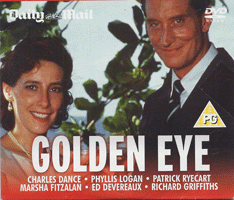 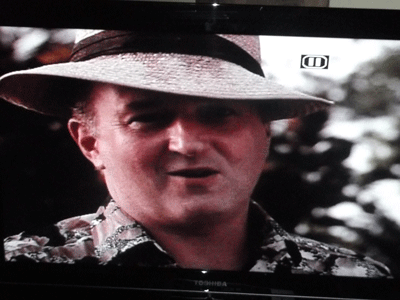
Golden Eye was actually a very good ‘bio-pic’ starring Charles Dance as Fleming, Julian Fellowes as Noel Coward and a very young Christoph Waltz as a captured U-boat crewman. It is, of course, not to be confused with the later film Goldeneye which saw Pierce Brosnan make his debut as the ninth James Bond, and is of course very well written – and I am not just saying that because I have recently republished as a Top Notch Thriller one of Reg Gadney’s early novels, Somewhere in England, and intend to reissue his debut spy story Drawn Blanc later this year.
I can now claim with totally honesty (for once) that I have had tea with two James Bonds and found them both extremely affable and charming chaps despite their licensed-to-kill reputations.
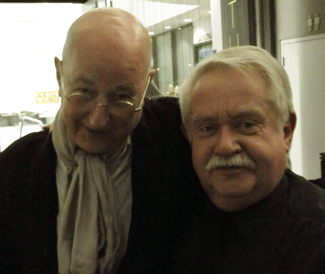

Timetable Changes
The eagle-eyed (or downright pedantic) reader of this august column will have noted that the current edition for the merry month of Flush-As-May is posted somewhat early, and to avoid further confusion, let me warn those with little else to worry them that the Hot-Enough-For-June column may well be slightly late. (By which time they will have identified the two fine thriller writers referred to in that overblown last sentence.)

The reason for this timetable alteration is that I will be otherwise engaged at the Chianti Crime Fest in Siena. All the time I am in Tuscany I will of course be thinking of my distraught readers suffering disruption to their carefully ordered reading schedules. Yeah, right; of course I will.
Naturally I will be back in England for the annual Birthday Lunch for Margery Allingham thrown by the Margery Allingham Society and always held as close to her actual birthday, 20th May, as possible. This year (technically her 111th), which also sees all her novels being reissued by Vintage, birthday celebrations – and cake – will be enjoyed in the distinguished surroundings of the University Women’s Club near London’s Hyde Park.
Traditionally the Society always invites a distinguished guest speaker to this event and this year that honour falls to that dashing young man-about-crime-fiction Jake ‘Captain Jack’ Kerridge of the Daily Telegraph. Surely a mouth-watering prospect and I don’t just mean the cake.
Pictured below: the late, great, Margery Allingham in the private ‘snug’ bar of her Essex home in the 1950s; and ‘Captain Jack’ Kerridge acknowledging the crowds of young fans which mob him mercilessly these days.
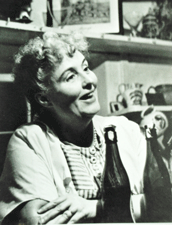 
More Missing Files
Last year I had the pleasure of editing an anthology of James Mitchell’s ‘Callan’ short stories, which first appeared in the Sunday Express forty years ago, as Callan Uncovered for Ostara Publishing. The strap-line blurb for the book was ‘The Missing Files’ and fortunately we resisted the temptation to call the book ‘The Complete Collection’.

At the start of the project, there was some dispute as to exactly how many short stories James Mitchell had actually written, following the astonishing success of the television series Callan which ran from 1967-72 and which to this day has a hard core of dedicated fans. Some sources said eight, others a dozen or fourteen. Sadly, there was no indication in the papers left by James Mitchell following his death in 2002. In the end, with the help of Callan fans and the British Library, we collected 25 stories (and an un-filmed script from the TV series) and were pretty pleased with ourselves.
However, within a week of Callan Uncovered being published we were contacted by another Callan fan who tipped us off to the possibility of ten more stories and so it was back to the British Library, to track them down, only to discover a further five stories from 1970!
And so Callan Uncovered 2 became not just a possibility but more or less inevitable, and will be published as an Ostara Original at the end of this month. It will contain not only the 15 “missing files” (all the Callan stories were labelled “files” following the first, The File on the Happy Hippy) but two reconstructed scripts of episodes from the first and second television series.
Both James Mitchell’s scripts – Goodness Burns Too Bright from 1967 and Blackmailers Should Be Discouraged from 1969 – had to be reconstructed from technical ‘shooting scripts’ used in the original recordings at ABC TV’s Teddington Lock studios as none of Mitchell’s original ‘dramatic’ scripts survived. It was only thanks to a dedicated Callan fan who spotted a job-lot of old ‘camera scripts’ for sale on eBay three years ago, that these did and they have a particularly poignant value in that the actual episodes were recorded on video-tapes which were subsequently wiped and re-used so that no actual recordings are known to survive.
Callan Uncovered 2, therefore, contains ‘missing’ files and ‘missing’ scripts from ‘missing’ television episodes, but the one thing that is truly missing from the collection are the illustrations which accompanied the stories in the Sunday Express. Drawn by Andrew Robb and based on the television characters (as in the case of Edward Woodward and Russell Hunter below), the illustrations were an integral part of the continuing appeal of the short stories long after the television series had ended.
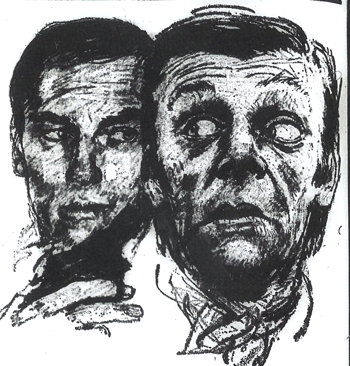
Something Grimm in The Cellar
I am inordinately proud of the fact that I was the first national newspaper critic to review, for the Daily Telegraph back in 1992, a debut novel entitled The Ice House by someone called Minette Walters. Since then I think I have reviewed all her crime novels and have even appeared with the author at public events. Despite that, Minette Walters went on to become an international bestseller and rightly regarded as one of the queens of English crime writing.
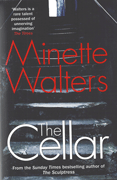 Her latest book, categorised as a novella, The Cellar, is published this month under the Hammer imprint and is certainly worthy of that creepy, spine-tingling trademark derived from the Hammer horror films of yore. Her latest book, categorised as a novella, The Cellar, is published this month under the Hammer imprint and is certainly worthy of that creepy, spine-tingling trademark derived from the Hammer horror films of yore.
It is by no means a conventional crime novel, though there are crimes aplenty, rather a Grimm (not ‘grim’, though in parts it is) fairy tale concerning a house somewhere in London occupied by an affluent family from West Africa who have imported an innocent young girl as the family slave. Isolated from other human contact, tortured, mutilated and abused, the girl turns out to be far more resourceful – and far less innocent – than her oppressors could ever have expected. Or is it possible she has powerful friends in very low places?
But this is not a straight-forward tale of redemption and bloody revenge, though there is a fair bit of revenge and it is quite bloody, because it is written by Minette Walters, a past-mistress at the art of manipulating the reader’s sympathy for pretty awful characters. (She is particularly good at evil mothers, or, fittingly in this case, a wicked step-mother.)
The Cellar is an uneasy read, dealing as it does with subject matter which we sadly know is not safely contained in the realms of fantasy, but actually does go on behind closed doors and drawn curtains. But even in the heart of a modern city with all the trappings of modern civilization (mobile phones, Ocado deliveries and ambulance-chasing lawyers), there may be older, more wicked, forces at work.
Heavyweight Division
After James Ellroy’s hernia-inducing 700-page Perfidia last year, June will see the publication here of the next US heavyweight: Don Winslow’s The Cartel from Heinemann. Clocking in at a mere 624 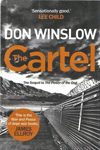 pages, The Cartel is the sequel to his 2004 bestseller The Power of the Dog. Both books focus on the so-called ‘War on Drugs’ between the US and Mexican Cartels with the power and resources of many a rogue nation and, in the eleven years which have passed between the two novels, somewhere between 60-80,000 Mexicans have been killed in drug-related violence. pages, The Cartel is the sequel to his 2004 bestseller The Power of the Dog. Both books focus on the so-called ‘War on Drugs’ between the US and Mexican Cartels with the power and resources of many a rogue nation and, in the eleven years which have passed between the two novels, somewhere between 60-80,000 Mexicans have been killed in drug-related violence.
Winslow’s blockbuster comes with impressive advance praise from Michael Connelly, Harlan Coben and James Ellroy who, in typically understated fashion, claims: “This is the War and Peace of dopewar books. Tense, brutal, wildly atmospheric, stunningly plotted, deeply etched. It’s got the jazz dog feel of a shot of pure meth!”
Needless to say The Cartel is also blurbed by Lee Child, who really must learn to read more slowly as I am having trouble keeping up with all his recommendations. Before I can start Don Winslow’s latest, I am following Lee Child’s instruction to read Gangsterland by Tod Golberg (Titan) which he describes as ‘As sharp as a straight razor … but a lot more fun’.

If you can suspend disbelief at the initial set-up – a professional and prolific killer for the Chicago Mafia avoids the FBI and uses the Mob’s version of a Witness Protection programme by becoming a Rabbi in Las Vegas – then you have to say that Lee’s take on the book is absolutely spot-on. (And in Vegas, where you can get married by Elvis Presley, why not a wise guy Rabbi?)
Personal Postscript
Although it has nothing whatsoever to do with crime fiction, I hope readers will indulge me and allow a small personal tribute to my old university tutor, the economic historian Professor Alice Teichova, who died last month.
Born in Vienna in 1920, Alice fled the Nazi Anschluss in 1938 to England where she read economics at Leeds University. In 1948 she moved to Prague with her Czech husband, completed her PhD and began to lecture in economic history. In 1968, she fled Prague just ahead of the invading Russian army, returning to England and resuming an academic career at Cambridge, the LSE and the University of East Anglia, whilst gaining honorary doctorates from the universities of Uppsala and Vienna.
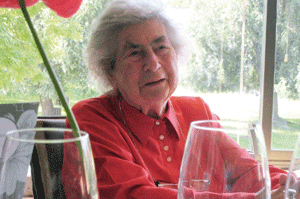
Following her narrow escapes from two invading armies, Alice used to joke that she was ‘the only person to have got out twice’ and that she never owned more books than she could carry in one suitcase, just in case she had to flee again! She was a kind and gentle teacher and a warm and charming human being, and I for one owe her a lot.
Titles from Middle Earth
Last year I reported that a New Zealand publisher had used a ‘blurb’ of mine for an excellent thriller by Paul Thomas and credited me with the epithet “UK Crime Writing Guru”, which just goes to show what an intelligent and charming bunch of people New Zealanders are.
Not content with one title, they have now given me another following an interview on the influential Crime Watch blog at:http://kiwicrime.blogspot.co.uk/2015/04/scottish-knights-and-agatha christies.html
I am described as “Mr Crime Fiction” which is a title I gratefully accept but only if said in the same tone that Sidney Poitier used in In The Heat Of The Night for the famous line: “They call me Mister Tibbs”…..
Pip! Pip!
The Ripster
{Mr Crime Fiction or Magnificis Imperitus – you choose}
|